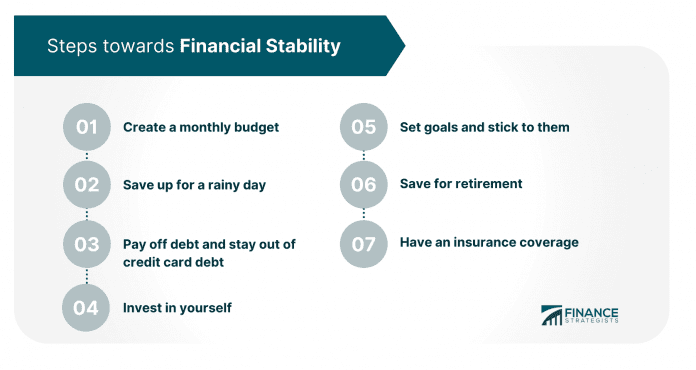Conquer Your Retirement: 5 Crucial Steps to Financial Freedom
Introduction
In this auspicious occasion, we are delighted to delve into the intriguing topic related to Conquer Your Retirement: 5 Crucial Steps to Financial Freedom. Let’s weave interesting information and offer fresh perspectives to the readers.
Conquer Your Retirement: 5 Crucial Steps to Financial Freedom

Retirement. The word itself conjures images: sun-drenched beaches, leisurely afternoons spent with loved ones, the freedom to pursue passions long deferred. But for many, the reality is far less idyllic. The fear of outliving their savings, the anxieties of a dwindling income, and the worry of becoming a burden on family members cast a long shadow over what should be a golden age. However, achieving a comfortable and secure retirement isn’t a matter of luck; it’s a matter of planning and consistent action. This article outlines five crucial steps to help you conquer your retirement anxieties and build a financially secure future.
1. Define Your Retirement Goals and Lifestyle:
Before you even think about investing, you need a clear picture of what your retirement will look like. This isn’t just about a number; it’s about a lifestyle. Ask yourself:
- Where do you envision living? The cost of living varies dramatically between locations. Retiring in a bustling city will be significantly more expensive than a quieter rural setting.
- What activities do you plan to pursue? Travel, hobbies, volunteer work – all these have associated costs.
- What level of comfort are you aiming for? Do you want to maintain your current lifestyle, or are you willing to downsize?
- What are your healthcare needs likely to be? Healthcare costs can be substantial in retirement, so factoring this into your planning is crucial.
- When do you plan to retire? The earlier you retire, the longer your savings need to last.

Once you have a realistic vision of your desired retirement lifestyle, you can begin to estimate the annual income you’ll need. There are numerous online retirement calculators available that can help you with this process, taking into account factors like inflation and expected investment returns. Remember to be realistic – don’t underestimate the costs associated with aging and potential health issues.
2. Calculate Your Retirement Needs and Current Savings:
With a clear picture of your retirement lifestyle, it’s time to crunch the numbers. Calculate your estimated annual expenses in retirement and multiply that by the number of years you anticipate being in retirement. This will give you a rough estimate of the total amount you’ll need saved.
Next, assess your current savings. This includes any retirement accounts (401(k), IRA, Roth IRA, etc.), savings accounts, and other investments. Compare this to your projected retirement needs. The difference represents the savings gap you need to bridge. This gap will determine the aggressiveness of your savings strategy and the adjustments you may need to make to your lifestyle or retirement timeline.
3. Develop a Robust Savings Plan and Stick to It:

Bridging the savings gap requires a well-structured savings plan. This involves several key strategies:
- Maximize Employer-Sponsored Retirement Plans: If your employer offers a 401(k) or similar plan, take full advantage of it, especially if they offer matching contributions. This is essentially free money, and it’s one of the most effective ways to boost your retirement savings.
- Contribute to Individual Retirement Accounts (IRAs): IRAs offer tax advantages that can significantly enhance your savings growth. Traditional IRAs offer tax-deductible contributions, while Roth IRAs offer tax-free withdrawals in retirement. Choose the option that best suits your financial situation and tax bracket.
- Automate Your Savings: Set up automatic transfers from your checking account to your retirement accounts. This ensures consistent contributions without requiring constant manual effort. Even small, regular contributions add up over time thanks to the power of compounding.
- Increase Contributions Regularly: As your income increases, gradually increase your retirement contributions. Even a small percentage increase can make a significant difference over the long term.
- Consider a Diversified Investment Strategy: Don’t put all your eggs in one basket. Diversify your investments across different asset classes (stocks, bonds, real estate, etc.) to mitigate risk and potentially enhance returns. Consider consulting a financial advisor to help you create a diversified portfolio tailored to your risk tolerance and retirement goals.
4. Manage Debt and Minimize Unnecessary Expenses:
High levels of debt can significantly hinder your ability to save for retirement. Prioritize paying down high-interest debt, such as credit card debt, before focusing on aggressive retirement savings. Once debt is under control, focus on minimizing unnecessary expenses. This might involve cutting back on entertainment, dining out, or other non-essential spending. Every dollar saved is a dollar closer to your retirement goals.
5. Regularly Review and Adjust Your Plan:
Your retirement plan shouldn’t be a static document. Life circumstances change, and your plan should adapt accordingly. Regularly review your progress, adjust your contributions as needed, and re-evaluate your retirement goals. Consider consulting a financial advisor periodically to ensure your plan remains on track and aligned with your evolving needs. Market fluctuations, changes in tax laws, and unexpected life events can all impact your retirement savings, making regular reviews crucial for long-term success. Don’t be afraid to seek professional advice; a financial advisor can provide valuable guidance and help you navigate the complexities of retirement planning.
Retirement planning can seem daunting, but by breaking it down into manageable steps and consistently implementing these strategies, you can significantly increase your chances of achieving a comfortable and secure retirement. Remember, the key is to start early, stay disciplined, and regularly review your plan. Conquering your retirement anxieties starts with taking control of your financial future today. Don’t delay; your future self will thank you.

Closure
Thus, we hope this article has provided valuable insights into Conquer Your Retirement: 5 Crucial Steps to Financial Freedom. We appreciate your attention to our article. See you in our next article!
google.com






